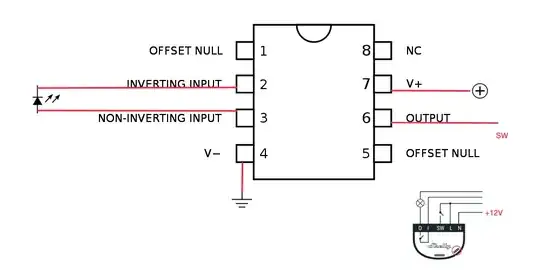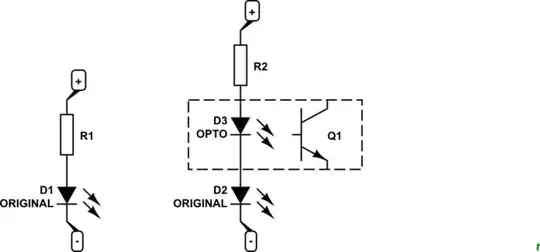I am trying to know if an air conditioning is ON/OFF (Daikin with only Wired Remote Control). I want to read its LED. The circuit is fed by a simple 17.8 V two wires from the machine. I've read the base of the LED respect to the GND, and both extremes are at 6.13 V when OFF and at 1.9 V one over the other when ON. I don't dare to interfere the circuit at all, but simply tell the state to a Shelly 1 relay to expose it into a HomeKit system.
In my really poor knowledge about electronics I understand 741IC, yet a bit old, could make the work, as it doesn't drain any current from the Vin and could simply connect the pin 7 (V+ pin) with pin 6 (Output pin) which I would directly connect to the SW pin in Shelly 1.
So the final scheme would be:
Would it interfere, could damage the AA circuit?


Thanks a lot for your idea, and the the CircuitLab link! This is really passionate!
– Juan Falgueras Apr 04 '21 at 10:59